|
| | ROMANIAN AUTOMOTIVE PREMIERES
Romania has been one of the first ten countries in the world to put the car in circulation, ever since it was manufactured. Starting from 1895, two steam cars built by the French company Gardner Serpollet begun circulating. One is exhibited at the Technical Museum of Bucharest.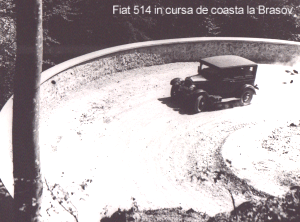
In the Golden Book, set by ACR and including all the major motor cars, the first position goes to an auto-carriage made by Peugeot company, with an engine of 4HP. This car has been imported in 1889 by Barbu Bellu from Bucharest and sold after seven years. According to the same source, in 1895, three inhabitants of the city of Craiova brought into the country three auto-carriages with 12 HP engines, Benz type. One year later, three more "auto-carriages" were brought in different towns: one Peugeot in Bucharest, one Rochet-Schneider in Tecuci and one Bollee tricycle in Falticeni. In 1898, one of the first American Oldsmobile made its appearance on the streets of Bucharest. It was built in E.R. Olds’ workshop that had started to make cars just one year before. Instead of a steering wheel, the car had a control stick. Today, it can be seen at the Technical Museum in Bucharest. In the same year, the newspapers wrote about the exquisite engine carriage, Victoria style, brought by Doctor Tomescu. This car had a 3.5 HP engine rear placed. Note that the number of "auto carriages" worldwide was not exceeding … 100 items!
The first electric car (a coupe with four places for passengers, plus two front places for the driver and the "assistant") brought by Leon Leonida from Paris circulated on the streets of Bucharest ever since 1906.
Autotrucks made their appearance on the world market in 1910. One year later, the first autotruck, a Berliet, which transported beer barrels from the Bragadiru factory, was brought to Romania.
In 1900, the country had no traffic office. The mayoralty was in charge with the formal registering of an auto. The number 1 registering went to an automobile bought by Gheorghe Basil Assan, the son of the person who had built the first steam driven mill nicknamed Assan’s Ship. The car, some kind of a convertible carriage, was a 15 HP engine Panhard made in Liege, Belgium. This car can also be seen at the Technical Museum.
At the beginning of the century, the first car registered for traffic and at the capital prefect’s office was the one of Basil Assan and it received the number 1-B. 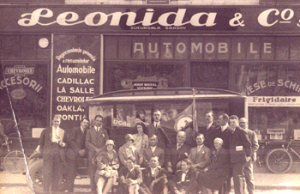 Two years later, Prince Valentin Bibescu, a very overbearing man, came from Paris with his personal car. He asked the capital prefect to transfer the number 1-B to his car, proving with documents that his car had been registered in Paris before the day the number 1-B had been given. But Basil Assan did not accept to give up his priority. In an uneasy position, the prefect found the solution: he offered Bibescu number 0-B. He accepted and so, number 0 ran for some 30 years in the Romanian capital. Two years later, Prince Valentin Bibescu, a very overbearing man, came from Paris with his personal car. He asked the capital prefect to transfer the number 1-B to his car, proving with documents that his car had been registered in Paris before the day the number 1-B had been given. But Basil Assan did not accept to give up his priority. In an uneasy position, the prefect found the solution: he offered Bibescu number 0-B. He accepted and so, number 0 ran for some 30 years in the Romanian capital.
Until 1 March 1906 over 150 cars were imported in Romania. Among the most widely spread marks: De Dion-Bouton, Mercedes and Panhard. Afterwards, the number of cars begun to increase, to 233 in 1907, 447 in 1909 (the car registered with number 169 belonged to the Diplomat Nicolae Titulescu), to 850 in 1912. Most of the cars were registered in the counties of Ilfov (50), Iasi (30), Teleorman (27), Braila (25), Prahova (21), Romanati (20).
The first formal driving examination took place on 10 January 1908, at the order of the Chief commissioner of the capital police. One could get the license after a speed test during which the examining officer used to throw a pillow in front of the car, and the driver had to brake instantly.
The classes of the first Drivers school started on 10 January 1910. In the morning, classes of motor car theory, in the afternoons, practice. The theory had two major chapters: "Man killing" and "Smoke generating by cars".
The motor car between the two world wars
At the beginning of World War I, the auto park in Romania exceeded 1,000 items. More than two thirds of those would be destroyed during the war. After the peace settlement, the auto park grew primarily as a consequence of the work of representatives in Romania of foreign carmakers Ford, Chevrolet, Renault, General Motors. For five successive years, starting from 1922, the car import strongly increased, with an annual average of over 2,000 cars, so that in 1926 the number of cars in Romania had reached 11,300. 
During 1936-39, the number of cars grew slightly, with some 500-1,500 pieces per year. At the end of 1939, there were some 25,876 automobiles, of which over 73.5% American made cars. The Ford Enterprises Romania based in Bucharest, a joint venture, also contributed to that. In 1935, Ford Enterprises Romania started to assemble the Ford car 1935 style, equipped with a 60 HP V8 engine. The car was able to carry six people. Other models of Ford cars were made afterwards.
Among the major types, the most frequent were: Ford T; Chevrolet Superior – popular car, built in 1921; Nash Four – made since 1922; Renault 12CV – 1921; Morris Cowley – made in 1920, assembled in England with American Continental engine; Austin Baby – 1924 made; Fiat 501 – 1919 and the 1924 Torpedo type, a duplicate of Ford T; Opel – 1911; Chrysler 50 – 1927; Overland Four, an US car manufactured in 1926; Studebacker Erskine – 1927; Packard Super Eight limousine – 1928; Mercedes 770 – 1930; Graham Streak – 1932; La Salle – 1932; Auburn SC – 1935; Citroen 7A – 1934; Fiat Balilla – 1932 popular car; DKW F1 500 – 1931 two cylinders engine. Among celebrities: Lincoln Zephyr, a V12 110HP engine 1936 made; Buick Seria 40, with an 8 cylinder, 3.8 liter engine; Mercedes 170 V and 170 D, with a Diesel engine; Ford – England Ten with a 4 cylinder, 1.2 liter engine; Lancia Aprilia with a V4, 1.35 liter engine.
Famous Romanian constructors
Dimitrie Vasescu – at 20, in 1880 when he was a student at Ecole Centrale of Paris, on his own and based on an original design he built a steam car with the best performances at the time. His car successfully tested for traffic and has long run on the streets of Paris. The motor car had the rear wheels bigger than the front ones, and all four wheels were made from steal spokes metallic rim with a massive rubber tire, securing flexibility and the capacity to run on unfit streets. The multitubular boiler and the manometers and adjustment taps were placed in front of the driver to ensure an easy handling and adjustment, while the water reservoir was under the driver’s seat. A firebox where charcoal was burned was placed around the seat. The car had a driving wheel and two independent brake systems. When he came back in the country, Eng. Vasescu brought with him the car driving it through Bucharest.
George Constantinescu – created a new branch of science within continuous medium mechanics, concerning vibration transmission of power: Sonics. One of his outstanding inventions is the Mechanical couple converter, which can automatically transmit the power from an engine or other power generator, to a driven (secondary) shaft. Its use includes tool-machines, locomotives, cars and so on. Using the couple converter transmission system simplifies the traditional mechanism of transmission to driving forecarriages made up by clutch, gearbox, longitudinal transmission (cardan axle), differential and planet shaft cone group. The couple converter secures a progressive coupling and a continuous and automatic accommodation of car movement to the changing resistance to advance. 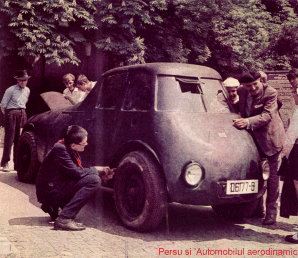
Aurel Persu – has the merit of being among the first experts worldwide to have studied the use of aerodynamic shape of moving bodies in cars. He was interested in this field since 1920. The study and research work brought the young graduate of the Technische Hoch Schule from Berlin-Charlottenburg to the conclusion that the car coachwork should be shaped as a half of a falling water drop. The car designed by Persu had a building shape resembling to a helicopter of our days, with the largest part in front where the passenger seats were placed. The engine was to be put in the rear where the space was much limited. In order to reduce air resistance to advance, the wheels were introduced inside the coachwork. At the time, all cars had wheels outside the coachwork, with strongly underlined wings. Based on his research work, Eng. Aurel Persu builds in 1923 the first automobile with an adequate aerodynamic shape, which he patents in Germany. On September 19, 1924 he receives the Inventor Patent No 402683. Following over 100,000 km endurance tests, his invention is also patented in other Western countries. To be noted that, based on the diminished distance between the rear wheels Persu scraped the need to introduce a differential in transmission, so that a high speed could be used while driving through turnings. Ford and General Motors plants declared their interest in buying the Patent but did not commit themselves to build cars based on the Patent (all the cars are presently built based on that aerodynamic principle), so that Persu refused the bids. Eng. Aurel Persu, Technical mechanics professor at the Polytechnics School in Bucharest delivered a well-documented scientific paper before the Romanian Academy, entitled "The right aerodynamic car", including scientific data of his invention.
Transportation in Romania
No steam diligence or steam tugs were used in Romania for travelers. Instead, since the summer of 1911, internal combustion engine omnibuses managed by private entrepreneurs started to run between Bucharest-Predeal and Bucharest-Calimanesti. The Fiat passenger buses used had a capacity of 12 people including their luggage (put on the roof and fastened to its lattice). They ran with the amazing speed of 40 km/h. Those buses were used only for inter-city transport, continuing the railroad links or to cover shorter routes. Buses were not used for public transport in Bucharest or in other cities before World War I, horse or electrical driven trams meeting the travelling needs of people. Consequently, after the road net development, the number of buses increased, reaching 3,170 in 1930. Chassis were bought and then coachworked in the Leonida and Peleanu workshops in Bucharest. 
The Transport Society of Bucharest bought in 1936 100 Renault chassis, 100 Chevrolet chassis and 20 Henschel chassis which were coachworked in Leonida & Co. workshops. The busses served the transport routes where no trams were operating. The big busses (60 seats – Renault and Henschel) were intended for the center of the city, while those with a small capacity (20 seats – Chevrolet) were meant for the outskirts where the traffic was reduced and the pavement was weaker.
The first Romanian bus was made in 1965 by a team of experts from ITB Central Workshops. It had a capacity of 70 passengers and was coachworked on the chassis of a SR-101 truck. TV-2 buses, TV-20 E troley-buses were afterwards produced at Tudor Vladimirescu plant which also took over the building of TV-41 utilitarian (vans, isotherms, tanks, minibuses, auto-labs).
The number of trucks reached 8,050 in 1939. The major types were Bussing-Nag, Mercedes, Ford, MAN, Citroen, Morris Commercial, Krupp, Magirus, Henschel. Between the two world wars, the auto-truck Opel-Blitz was brought from Germany. Specialized trucks were also imported: the three wheels Faun Werke car for garbage, the combined Faun Werke car for garbage and street washing, the street washing car Daimler-Benz, the Daimler-Benz car for excrements transport, Grasmuck fuel auto-tank, Magirus pivoting auto-stairway, Koebe fire machine, Mercedes-Benz tank-auto-pumps.
SR-101 was the first Romanian truck. It was made in the Steagul Rosu plant of Brasov, the former Astra company. The truck was provided with a 6-cylinder 5.55-liter petrol engine. It could reach a maximum speed of 65 km/h and it could carry a maximum load of 4 tones. Later, SR-131 Carpati, SR-113 Bucegi and Roman (in cooperation with the Ministry of National Defense) trucks were assembled in different types: weighing machine, tank and so on.
The first Romanian passenger cars
In 1908, the City hall of Arad asked for the city to be supplied with buses. The French branch of Westinghouse from Le Havre offered to build a plant, Marta. Since 1910, it started to manufacture cars with different coachworks: double-phaeton, Landolet and so on, with up to 30 HP engines. The company manufactured some 150 Marta cars until its bankruptcy. Afterwards, the company was taken over by Austro-Daimler, which reorganized its production and introduced new models under Austro-Daimler license. The basic model had a 4-cylinder 2.5 liter 18-22 HP engine. That was used primarily as a cab in Central Europe. Buses and trucks were also built. Between 1909-1914 some 300 trucks and buses and some 650 cars were manufactured.
After World War II, there was no production of cars until Dacia. Anyway, some prototypes and even short series production did exist. In 1945, Eng. Radu Manicatide made, at the IAR plant, a mini-car named MR 1945 type. Equipped with a modified 2 cylinder motor cycle engine, it supplied 11.5 HP at a 4,000 rpm revolution. It was an all-in-the-rear type, with no differential, with an aerodynamic, convertible coachwork, with a folding windscreen, no wings, and wheels inside the coachwork. It could reach a maximum speed of 100 km/h.
In 1946, a group of engineers and technicians from ASAM and Malaxa of Bucharest and from IAR of Brasov, headed by Petre Carp, made a popular car prototype, Malaxa. It was a 3 cylinder forced air-cooled 30 HP engine, all-in-the-rear type. The car had six places and could reach a speed of 120km/h. Its petrol consumption was 10l/100km.
In 1947, at IAR plant of Brasov, a team led by Eng. Radu Mardarascu made a car prototype in three items (two limousine type and a station), with a four cylinder 45 HP engine, that could reach 124 km/h. Those cars functioned for 12 years in ordinary using conditions. 
In 1965, 9,216 cars were in use by people, all of import origin: Moskwich, Volga, Skoda, Warszawa, Wartburg, Trabant, Fiat, Renault. The lack of hard currency for parts import lead to considering making a Romanian car. Thus, on August 20, 1968, the Colibasi Plant was inaugurated and serial production of the first Dacia 1100 cars begun.
The first motor races…
The first motor car race (Bucharest-Giurgiu-Bucharest) took place in 1904, Romania being among the first 6 nations in the world to have organized speed motor races. George Valentin Bibescu, with an average hourly speed of 66 km/h won the contest.
In 1901, G.V.Bibescu succeeded to set an exceptional record, with a famous Buick car, coming from Geneva to Bucharest (1,827 km) in only 73 hours.
In 1905, G.V.Bibescu, Leon Leonida and Mihai Ferekide, accompanied by two women, Marta Bibescu and Maria Ferikide, succeed the boldest raid at that time, with three convertible cars. They left from Galati in April and reached Ispahan, the former Persian capital, in July. The three 16, 20 respectively 40 HP cars carried on the nightmare roads of Eastern Europe and Asia 28 suitcases, 6 trunks, 15 petrol containers and… 10 rifles. The story of their journey was written by the French writer Claude Anet in his book "La Perse en automobile", himself a participant in the most exciting raid of that time.
The first Romanian to be awarded in an international speed competition was Ion Maican. In 1906, he came third in the Chateau-Thierry, France, race, of 90 competitors who took the start.
The first auto-rally in Romania took place on June 16, 1907 and was actually a race between cars and a balloon. The latter one had aboard three officers, and the cars had to follow its flight and reach the landing site before the balloon. The winner was a car-driver.
*The first non-stop driving race Bucharest-Paris-Bucharest took place in 1926, and was managed by Romanian car-driver Henri Manu in team with N.Constantinescu.
*The first stage, Bucharest-Paris (2,750 km) was run in 52 hours, while the return, on the same route, took an hour less. Four years later, Bizu Cantacuzino, Dr. Dinopol and the famous Eng. Jean Calcianu covered the distance Bucharest-Paris within 44 hours.
The Monte Carlo rally – the most famous rally in the world, had at its start in 1927 Alexandru Racovita, who left Bucharest with a Steyr, and George Ghica, who left Brussels with a Buick. Racovita ranked five, and Ghica ranked 30 at general event and came first at 'comfort'. In 1928, Henri Manu won the first Prix in the coast race and ranked 11 in general classification. In 1936, Petre Cristea together with Gogu Constantinescu and Ionel Zamfirescu won the Monte Carlo Rally on a Ford modified by the three, succeeding the first victory of Ford in this famous rally. 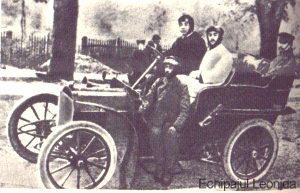
8 simultaneous records – the most astonishing performance of a Romanian abroad was made by Matei Ghica who qualified first in 8 events at Montherey, France, on 13 July 1928. Running a specially designed car, which he named Cosette, he beats the following world records: 5 km in driving, 5 miles in driving, 50 km – 50 miles – 100 km – 100 miles speed and one hour average speed events.
In May 1927, George Fernic of Galati running a Bugatti in Indianapolis ranked 11 among 49 competitors in the Grand Prix.
…The most famous drivers
Jean Calcianu - He was born in 1893, in the region of Dobrogea. He came to Bucharest in 1909 to study mechanics. In 1914 he decided to go to France, taking with him just what he had learned. He becomes employed in the Renault company and continues to study automobile’s secrets. In 1916 the war makes him come back to Romania where he works as an airplane mechanic within the French Mission. After the war, he goes back to France where he fixes cars in Maitre Corniot’s workshop. Calcianu was obsessed with a certain car which he had seed in passing and which was manufactured in a small plant in Molsheim, Alsace. It was a Bugatti, the car that included many ingenious mechanical solutions. He succeeds to maintain two such cars owned by Dubonnet and is rewarded by being offered a 37 1.5 liter type in order to compete on the Miramas auto-field. Calcianu used to work hard, during night hours, to improve the car performances. He gave a special attention to air sliding, replacing the coachwork screws with buried ones and polishing the paint. The day of the race: Ettore Bugatti was taking part with his three famous drivers Constantini, Jules Groux and Friedrich. Calcianu puts his 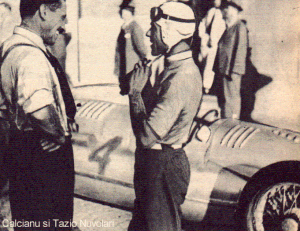 cap on with its peak backwards and sets a new record of 173.6 km/h. Ettore Bugatti, who was a model of haughtiness, comes close full of envy but also curious, notes the modifications brought to the car and expresses his admiration with a slap in Calcianu’s back. They say they celebrated for a week at Corniot with old wine bottles coming from the South of France. Bugatti employed Calcianu at the testing bank of his plant. For six years he remained loyal to this mark while completing his studies at Ecole Superieure Technique. But at Bugatti he was not allowed to race. Nevertheless he succeeds to run in 2-3 local races on a Talbot, ranking first in the Laffrey coast and coming first on the circuit at Miramas. Homesickness hurries his leaving. After paying a 5,000 Francs guarantee he becomes Bugatti representative for Romania and comes back. Another life starts now for Calcianu, sometimes marked with satisfactions. cap on with its peak backwards and sets a new record of 173.6 km/h. Ettore Bugatti, who was a model of haughtiness, comes close full of envy but also curious, notes the modifications brought to the car and expresses his admiration with a slap in Calcianu’s back. They say they celebrated for a week at Corniot with old wine bottles coming from the South of France. Bugatti employed Calcianu at the testing bank of his plant. For six years he remained loyal to this mark while completing his studies at Ecole Superieure Technique. But at Bugatti he was not allowed to race. Nevertheless he succeeds to run in 2-3 local races on a Talbot, ranking first in the Laffrey coast and coming first on the circuit at Miramas. Homesickness hurries his leaving. After paying a 5,000 Francs guarantee he becomes Bugatti representative for Romania and comes back. Another life starts now for Calcianu, sometimes marked with satisfactions.
Back to Romania, he opens a small repair workshop in Maltopol Street. Together with Gh. Nadu, an enthusiast of car racing who had financial resources, he goes to France and bring back three Bugatti cars. Prepared by Calcianu, Bugatti comes on the first place in 1931 in the 2-liter event of the Grand Prix of Lemberg. In the same year, Calcianu sets the record Bucharest-Paris, making the distance within 50 hours on a Buick. He loses the Bugatti license, as well as the guarantee. He works just for passion, asking no money, but has to take a paid job in the airplane plant of IAR Brasov, where he makes friends with Petre Carp.
In 1934, along with IAR he organizes the first closed circuit race in the country: the Grand Prix of Brasov. Calcianu divides his work between the airplane engine test stand and the manufacture of a Romanian racing car, Ford Carp, a very…unsuccessful mono-coque.
Calcianu sets another record on Feleac beating the expert of the coast Hans Stuck. Calcianu’s most beautiful victory comes in 1939, in the Grand Prix of Belgrade City where he comes before all the elite of German and French drivers contesting on an Alpha Romeo which had been driven by Tazio Nuvolari. Until the war broke out, Calcianu ran in every national race, winning most of them, with just one equal rival: Petre Cristea.
After the war, he collects the damaged racing cars and, with the help of the Romanian Automobil and Motorcycling Federation, he succeeds to repair them. He retires to Brasov for three years, due to health problems. He comes back to Bucharest bringing with him Maseratti, Mercedes and one BMW cars. His health condition worsens and he is taken to hospital. He dies but continues to be present in the hearts of all automobile impassionates. Starting with 1973, the Jean Calcianu Cup is offered to the winner of the Grand Prix of Bucharest…
Today, the Duesenberg Straight Eight automobile especially manufactured for the Indianapolis race can be seen at the Technical Museum of Bucharest.
Petre Cristea - He was born on January 31, 1909, in Bucharest. His father, Gr. Cristea, was a chief accountant at Leonida, the greatest motor car importer in Romania. Little Petre was a constant visitor of the repair workshops. At 13, he learned to drive the company’s car, a Renault 1921. He gets his driving license in 1925, saying he is 18 when he actually was just 16.
In September 1930, he discovers the regulation of Monte Carlo Rally. He sends the booking form for the 1931 edition, specifying the car: Dodge Victory Six. Drivers: Petre Cristea and Zoltan Molnar. For the 3-rd and 4-th places, he registers his brother-in-law, Al.Paunescu, and the mechanic Gogu Constantinescu. He takes the start in Iasi and comes 11 of 152 competitors. In 1934, on a Ford V8, he ranks 18 from 177 contestants in the Monte Carlo Rally and the third in Carpathians’ Cup.
In 1935, he comes 15 of 169 competitors in the Monte Carlo Rally. He wins the first place in sports event in the Grand Prix of Brasov and in the international Race of Feleac.
1936 brings Petre Cristea the victory in the Monte Carlo Rally. He is the first and only Romanian to have succeeded such a performance. It has also been the first victory of Ford company in the most famous world rally. At the Grand Prix of Bucharest he wins the first place in sport category and comes third at racing event. At the Grand Prix of Brasov he ranks second at the racing event. He wins the hillclinmb race at Poiana Brasov.
In 1937, on Ford V8, he comes 7th of 172 drivers in the Monte Carlo Rally, losing the first place because he was penalized for the wings dimensions. In the Grand Prix of Brasov he gets the first place at sports event and the second place at racing. He wins the hillclimb race of Poiana Brasov and Sinaia (second place in racing event), the international hillclimb race of Feleac at sport category, and comes second in the racing event. 
In 1938, on a BMW, he takes part in the Grand Prix of Portugal and gets the first place at sports event. At Gross Glockner (Austria), he comes second at sport category. He wins the Grand Prix of Bucharest, the GP of Brasov (sport category), the hillclimb race of Sinaia and Carpathians’ Cup. He ranks second at the hillclimb race of Feleac and at the hillclimb race of Poiana Brasov.
In 1939, at Nurburgring, Germany, he comes first at sports event, on a 2,000 ccm BMW. He sets an average speed of 115 km/h, record that has only been beaten in 1953 by Stirling Moss. He succeeds the first place, racing event, in the La Turbie, France, race. Comes second in the GP of Finland, sixth in the GP of Luxembourg and second in the GP of Brasov. In the GP of Bucharest he ranks second, after Hans Stuck (600 HP Auto Union).
Alexe de Vassal - The last prince of motoring in Romania, Alexe Vassal was born in the same month and in the same decade with the Automobil Clubul Roman, i.e. April 15, 1910, just six month from the day when the Act of setting up the ACR was signed, on April 5, 1904. At his 90th anniversary, on April 15, 2000, the descendant of a Count of de Vassal was celebrated, with respect and  consideration, not only as a honorary deputy chairman of ACR but also as a European personality who dedicated his whole life to promoting motor racing and sporting aviation. His father, a known public person of the first half of the century (among others, a chairman of General Motors in Romania) succeeded to get him an approval for the examination for driver’s license at just 15! And so, Alexe de Vassal has been a driver for 75 years. The car the senior owns today is a Subaru which he drives (and sometimes even sets!) daily. Along with the well-known Petre Cristea, Jean Calcianu, Titu Manicatide, Matei Ghica, Alex Berlescu, Sandu Costaforu, Alex. Papana (the famous aviator), M. Butuculescu, Dudu Frim, Alexe Vassal was part of the golden generation of the Romanian sports motor racing (primarily between 1930-1939). The last remarkable race he contested in together with Petre Cristea was the Monte Carlo Rally of 1938. After the war, he succeeds to bring back to public attention the traditions of the Romanian motor racing (he actively supports the creation, in 1948, of the Romanian Federation of Motor and Motorcycle racing – FRAM). In 1960 he is among the founders of the Romanian Car-drivers Association and in 1967 he contributes to the resuscitation of Automobil Clubul Roman which gradually reunites, under that noble name, the whole motor-car movement in Romania. consideration, not only as a honorary deputy chairman of ACR but also as a European personality who dedicated his whole life to promoting motor racing and sporting aviation. His father, a known public person of the first half of the century (among others, a chairman of General Motors in Romania) succeeded to get him an approval for the examination for driver’s license at just 15! And so, Alexe de Vassal has been a driver for 75 years. The car the senior owns today is a Subaru which he drives (and sometimes even sets!) daily. Along with the well-known Petre Cristea, Jean Calcianu, Titu Manicatide, Matei Ghica, Alex Berlescu, Sandu Costaforu, Alex. Papana (the famous aviator), M. Butuculescu, Dudu Frim, Alexe Vassal was part of the golden generation of the Romanian sports motor racing (primarily between 1930-1939). The last remarkable race he contested in together with Petre Cristea was the Monte Carlo Rally of 1938. After the war, he succeeds to bring back to public attention the traditions of the Romanian motor racing (he actively supports the creation, in 1948, of the Romanian Federation of Motor and Motorcycle racing – FRAM). In 1960 he is among the founders of the Romanian Car-drivers Association and in 1967 he contributes to the resuscitation of Automobil Clubul Roman which gradually reunites, under that noble name, the whole motor-car movement in Romania.
Marin Dumitrescu - He is the transmission gear between the golden generation illustrated by Calcianu and Cristea, and the classics generation, which came after 1967. He makes his debut in 1948, in the speed circuit races, with modified Jeeps. Enjoying favorable conditions, Marin Dumitrescu becomes, between 1949 and 1958, the collector of most of absolute champion titles at circuit speed and coast. He was a competitor in rallyes, along Petre Vezeanu. He won his last champion title on a Dacia 1300, in 1976.
Eugen Ionescu-Cristea - He is one of the most gifted modern Romanian car-drivers. He was born in Bucharest, on May 26, 1938. He succeeded to get 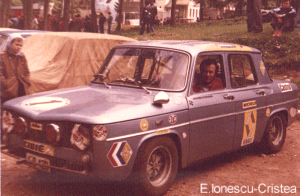 36 national champion titles, at all the three specialties: hillclimbing, circuit and rally speed. He drove cars like Fiat 850, Renault 8 Gordini, BMW 2002 TI, Lancia Fulvia HF and Dacia. As fellow members of team he had Petre Vezeanu, Dan Amarica, Petre Parcalaboiu, Tudor Bucataru. Among the international awards: two victories in the Balkan Rally (1968 and 1972), the second place in the Gunaydin, Turkey, Rally (1978) and two victories in the Iron Gates Rally (1972 and 1973 together with Petre Vezeanu). In 1976 he was awarded the title of master of sports. 36 national champion titles, at all the three specialties: hillclimbing, circuit and rally speed. He drove cars like Fiat 850, Renault 8 Gordini, BMW 2002 TI, Lancia Fulvia HF and Dacia. As fellow members of team he had Petre Vezeanu, Dan Amarica, Petre Parcalaboiu, Tudor Bucataru. Among the international awards: two victories in the Balkan Rally (1968 and 1972), the second place in the Gunaydin, Turkey, Rally (1978) and two victories in the Iron Gates Rally (1972 and 1973 together with Petre Vezeanu). In 1976 he was awarded the title of master of sports.
Aurel Puiu - An architect, he was over 35 when he first took the start in a motor race in Brasov. After a short while, he has his first great satisfaction: he wins in Romania’s Rally and is taken in the ACR team. On a Renault 8 Gordini, he comes fourth in the up-to-1,300 ccm car event, at the Danube Rally. In the same year, he wins the first place at class event and the third place at general in the Balkan Rally in Yugoslavia. After an unsuccessful season, he succeeds three national champion titles in rallys: 1969, 1970, 1971.
Stefan Iancovici - At 19 he gets acquainted for the first time with motorcycle racing. He wins three titles of republican champion at motocross, three titles on speedway, two titles on regularity events and sets two records on the circuits of Feleac and Medias. He wins two golden medals at the Six days races in Austria and Czechoslovakia. He makes his debut in car racing in 1966 when, having C. Radovici as codriver, he wins the first place at 1150 ccm event, on a Renault 10 Major. In 1968 he is chosen for the ACR team. Along with Marin Dumitrescu, on a Fiat 1300, he gets the first place at class and the second place at "general" in the TransBalkan Rally. His peak year is 1977, when he becomes the first motor racing driver of Romania, winning three champion titles – two at "class" and three absolute. He ran on the following cars: Fiat 1300, Renault 8 Gordini, Dacia 1100 S, Renault 12 Gordini, Dacia 1300.
Petre Vezeanu - He made his debut in motor racing at the Rally of Bucharest in 1966, being an exceptional co-driver. A year later, he made his entrance in international competitions, taking part in the Trans-Balkan Rally. After one more year, in 1968, he won the Rally of Romania together with Marin Dumitrescu, on a Fiat 1500. He drove cars like Fiat 1500, Renault 12 Gordini, Dacia 1300. In 1976 he was granted the title of master of sports at motor racing. He died in France, in a stupid traffic accident while in his way to the Rally of Portugal.
Dorin Motoc - He started as a cyclist. The first car on which he tried to contest was a Skoda. In 1973 he became a republican champion at coast speed on a Fiat 128. The same year, he takes part in the first international race: Iron Gates Rally, having as copilot his brother Cornel, on a Renault 12 Gordini. He came second. In 1974 he won two national champion titles at coast speed and ranked second in Danube Rally. Also in 1975 he was granted the title of master of sports. He ran on cars like: Dacia 1100S, Fiat 128, Dacia 1300.
Ludovic Balint - Born in Brasov, on February 2, 1948, he made his debut in motor racing at 17, on May 2, 1975, when he took part as a navigator in the Youth Rally of Brasov. That day he had the great opportunity of meeting Eng. Dumitru Telescu who later guided him towards the great performance. In the same year he makes his entrance in the National Rally Championship and wins the title of vice-champion at Dacia 1300 event, group 1. The next year, Loti wins his first title of national champion, at 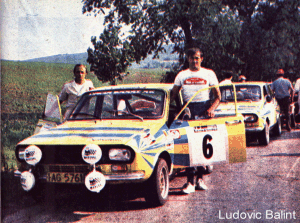 circuit speed. In 1977 and 1978 he wins at the same event four more national titles of champion at speed (coast and circuit). In 1980 he enters the Dacia team. He specializes in rallys, and along Constantin Zarnescu he wins six national titles of absolute rally champion: in 1981, 1982, 1986, 1987, 1989, 1991. He gets his seventh and last title in 1993, having as navigator mrs. Gabi Stroescu. During that time he also wins four titles of national champion with the Dacia team. Master of sports since 1979, Ludovic Balint has been named for five times the best Romanian motor racing driver of the year (in 1984, 1987, 1989, 1991, 1993). In 1987 he won the Danube Rally, being the only Romanian driver who succeeded such a performance. In 1993, based on the annual FRAK classifications, the Auto Top magazine named him the best motor racing driver of the last 25 years. He died on February 1, 1994, a day before his 46 anniversary, in a stupid traffic accident. circuit speed. In 1977 and 1978 he wins at the same event four more national titles of champion at speed (coast and circuit). In 1980 he enters the Dacia team. He specializes in rallys, and along Constantin Zarnescu he wins six national titles of absolute rally champion: in 1981, 1982, 1986, 1987, 1989, 1991. He gets his seventh and last title in 1993, having as navigator mrs. Gabi Stroescu. During that time he also wins four titles of national champion with the Dacia team. Master of sports since 1979, Ludovic Balint has been named for five times the best Romanian motor racing driver of the year (in 1984, 1987, 1989, 1991, 1993). In 1987 he won the Danube Rally, being the only Romanian driver who succeeded such a performance. In 1993, based on the annual FRAK classifications, the Auto Top magazine named him the best motor racing driver of the last 25 years. He died on February 1, 1994, a day before his 46 anniversary, in a stupid traffic accident.
Nicu Grigoras - He was the best speed driver in Romania. He was born in September 1948. In 1971 he graduated the Polytechnics of Iasi. Since 1973 he is employed at IAP where he served his apprenticeship at the test stand before reaching the contest department. He makes his debut in racing in 1976 and wins his first title of champion in 1977 (hillclimb speed, on a Dacia 1300 of group 2). Master of sport since 1981, he is named for five times as the first motor racing driver of the year. His peak season is 1980 when he wins five individual titles and two with the team. In 1986, besides the two titles on circuit and coast, Nicu Grigoras wins the international race of Resita, being the first Romanian driver to succeed such a performance in the Friendship Cup. As proved by the car on which he won most of his titles, a Dacia Sport Turbo, he was a very good engine and coachwork preparatory. After 1989 he retired from competition and he died in 1999.
Constantin Aur - He graduated the school of motor driving in France. Born on December 25, 1963, Titi made his debut in 1986 at the Rally of Brasov, on a private Dacia. On a Peugeot 205 GTI he wins the title of national champion, under the colors of the team Fortus Iasi. In 1992 he enters the Dacia team, running on Dacia Liberta. During the following years, with the help of his sponsor Ardaf he manages to get two performing cars, on which he struggles for the first places: first a powerful Audi Quatrro S2, then a Toyota Celica especially prepared by the racing club of Germany. In 1996 he races on Toyota at the Rally of Romania. Not very familiar with his new car, he comes out in the landscape and abandons the race. On the same car, he becomes a national champion at rallys in 1997, 1998,1999 and 2000. In 2001 and 2002 he won again the championship driving a Seat Cordoba WRC Evo2. In 2003 he competed in WRC-PC.
…And the most famous rally
The Rally of Danube/Romania
This is the most prestigious rally in Romania. Intended to go through the countries along the River Danube, its length has been cut in the meanwhile. In the end it covered just Romania’s routes. It takes place in the summer of each year. After 1989 its name turned to the Rally of Romania. It is part of the European Championship of Rallies.
In 1964, the motor racing forums of four European nations (FRG, Austria, Hungary and Romania) reunited their efforts aiming to create a rally, which would follow the watercourse of the River Danube. The finish line was in Romania. 45 crews took part in the first edition. In 1967, the winner of the rally was an Englishman, Tony Fall. The next year, the winner was the European champion Pauli Toivonen. The 1970 competition sees a record number of stars: Andruet – who will become a European champion, Fall, Warmbold, Poltinger, Ciubrikov. The winner is the Austrian Gunther Janger on a Porsche who also wins the 1971 contest. 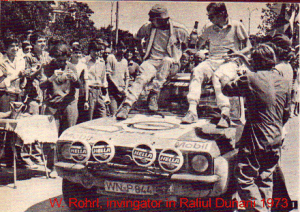 A certain Walter Rohl (Opel Ascona) who came before the very famous S. Barbasio (Fiat Abarth 124) and Sandro Munari (Lancia Fulvia HF) won the 9th edition (1973). On the fourth place came Eugen Ionescu-Cristea (R 12 Gordini). In 1974, the winner is still Walter Rohl on Opel Ascona. In 1978, F. Wittman wins on an Opel Kadett GTE, while in 1979 Vaclav Blahna on a Skoda 130RS comes first. In 1980, M. Pregliasco on an Alfa Romeo Alfetta GTV Turbo. The winner of the 1982 rally is Leo Pavlik on a Renault 5 Alpine, and in 1983 and 1984 the victory goes to Ferjancz, this time on a Renault 5 Turbo. Ferjancz on Renault 5 Turbo wins the 20th edition (1985) of the rally again. In 1987, the winner is for the first time a Romanian crew: Ludovic Balint – Constantin Zarnescu on a Dacia 1300. Starting from 1991, its name turned to the Rally of Romania. That edition was won by French Dominique Rumeau - Lionel Campo on a Peugeot 205 GTI. In 1993 the rally is won by M. Tarabassi – G. Decour on a Lancia Delta Integrale 16v, in 1994 by G. Berti – B. Serra on a Lancia Delta Integrale 16v, and in 1995 by Laszlo Ranga on a Ford Escort Cosworth who also won in 1996 but on a Subaru Impreza. In 1997 for the second time the victory went to a Romanian driver: Constantin Aur on a Toyota Celica. In 1998 the title went to a candidate for the European title: Jasen Popov, on a Ford Escort WRC. 1999 is a sad year as, because of the lack of sponsors the rally did not take place. In 2000, 2001 and 2002 Titi Aur won the rally and in 2003 the winner was Dan Gartofan. A certain Walter Rohl (Opel Ascona) who came before the very famous S. Barbasio (Fiat Abarth 124) and Sandro Munari (Lancia Fulvia HF) won the 9th edition (1973). On the fourth place came Eugen Ionescu-Cristea (R 12 Gordini). In 1974, the winner is still Walter Rohl on Opel Ascona. In 1978, F. Wittman wins on an Opel Kadett GTE, while in 1979 Vaclav Blahna on a Skoda 130RS comes first. In 1980, M. Pregliasco on an Alfa Romeo Alfetta GTV Turbo. The winner of the 1982 rally is Leo Pavlik on a Renault 5 Alpine, and in 1983 and 1984 the victory goes to Ferjancz, this time on a Renault 5 Turbo. Ferjancz on Renault 5 Turbo wins the 20th edition (1985) of the rally again. In 1987, the winner is for the first time a Romanian crew: Ludovic Balint – Constantin Zarnescu on a Dacia 1300. Starting from 1991, its name turned to the Rally of Romania. That edition was won by French Dominique Rumeau - Lionel Campo on a Peugeot 205 GTI. In 1993 the rally is won by M. Tarabassi – G. Decour on a Lancia Delta Integrale 16v, in 1994 by G. Berti – B. Serra on a Lancia Delta Integrale 16v, and in 1995 by Laszlo Ranga on a Ford Escort Cosworth who also won in 1996 but on a Subaru Impreza. In 1997 for the second time the victory went to a Romanian driver: Constantin Aur on a Toyota Celica. In 1998 the title went to a candidate for the European title: Jasen Popov, on a Ford Escort WRC. 1999 is a sad year as, because of the lack of sponsors the rally did not take place. In 2000, 2001 and 2002 Titi Aur won the rally and in 2003 the winner was Dan Gartofan.
|
|